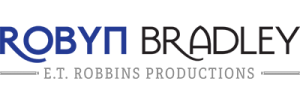8 Questions to Ask a Copywriter
You’ve learned why you should hire a copywriter. You’ve found some good freelance copywriters online and set up initial calls. What’s next? You need smart questions to ask. That’s where I come in. Below, I give you eight questions to ask a copywriter. These questions will guide your initial meeting.
BTW: Do you learn better by listening or watching a video? I got you! Scroll to the end of this article, and you’ll find my video on this topic.
Questions to ask a copywriter
1. Tell me about your experience. How long have you been working as a freelance copywriter?
What to look for in their answer: Do they have experience and the portfolio samples to prove it? If they’re a new copywriter (everyone was new at some point, including me), what have they done to educate themselves about copywriting? How have they practiced their craft?
Don’t dismiss a writer for being new. You likely found them online, and something about their site and samples resonated with you. I’m all for giving new writers a chance if everything else checks out.
2. How do you approach researching a new topic or industry?
What to look for in their answer: Good copywriters are quick studies. They will have a process for getting up to speed quickly on a new-to-them industry. Good writers won’t have all the answers. But they’ll know where to look for the answers. You want a writer who shares this sentiment. Be wary of anyone who says “writing is writing” and the industry doesn’t matter.
3. How do you balance SEO and creative writing in your copy?
What to look for in their answer: You can skip this if you’re not talking about digital assets. But if your project involves web copy, blogging, landing pages, social media, or online advertising, you’re going to want to hear what they have to say about search engine optimization.
- First, do they know what it is?
- Do they discuss how they stay current on all things SEO?
- How do they conduct keyword phrase research? Do they have a go-to SEO tool? (For example, I use Semrush.)
- And, finally, how do they balance writing creative copy that’s also optimized for search?
4. Can you walk me through your process for developing a new piece of content?
What to look for in their answer: Good writers love to talk about their process. Here are some things to listen for: They review all relevant collateral materials (from the client’s website to the brand guide), study the target audience, talk to subject matter experts as needed, and conduct their own research. Remember, a lot of work happens before the writing begins, so you should look for a writer who has a solid approach to this preparatory phase.
Once they draft a piece of content, they should also have a process for revising and proofreading before it lands in your hands.
Writers’ processes will vary. The above are broad strokes. But again, it gives you a starting point.
5. How do you incorporate feedback and revise your work?
What to look for in their answer: Good copywriters aren’t precious about their words. They understand that revisions are a natural part of any copywriting project. And good writers will also have a preferred way to receive client revision requests.
I always ask the client to get consensus internally and compile all comments into one doc before handing it off to me. And I always request revisions within 30 days of the client receiving the first draft.
Not all writers do the same thing, and that’s OK. But they should be able to talk about their approach.
6. What tools do you typically use to help you with your writing projects?
What to look for in their answer: Good writers have favorite go-to tools for things like keyword research (I use Semrush), transcriptions (I use Rev.com), and writing assistants (I use Grammarly).
There’s no wrong answer per se. But I’d be hesitant about any writer who has a blank stare and says they just use Word or Google docs to do their work. There’s much more to content marketing than that.
7. How do you make sure that your work aligns with the brand voice and messaging guidelines?
What to look for in their answer: The writer should ask if you have an in-house style guide and/or brand guide. But if they don’t ask, listen for other telling signs. For example, do they talk about carefully reviewing your website and other marketing materials to get a solid sense of the tone and brand voice?
8. What are your fees? How do you charge?
What to look for in their answer: Ah, the money question! I’m a fan of project-based fees. I’d be careful about working with anyone on an hourly basis, and not just copywriters. To understand why, read my blog post on how I advise copywriters to charge for their services.
OK, so there you have it: 8 questions to ask a copywriter!
These questions should give you a good sense of the copywriter’s experience, process, and approach to content creation, which are all important factors to consider when hiring a freelance copywriter.
From there, you’ll want to review their proposal and listen to your gut. If you’re on the fence between a couple of writers, give each one a small project and see who performs better overall. And not just with the writing. Who is easier to deal with? Who asks better questions? And who will fit better with your team? At the end of a trial project, you’ll likely have a good sense of who your go-to copywriter should be.
Got a Question for the Copy Bitch?
That’s me! I’m the Copy Bitch. Contact me or visit my YouTube channel and leave a comment on one of my videos. I might make a blog post or video with the answer.
